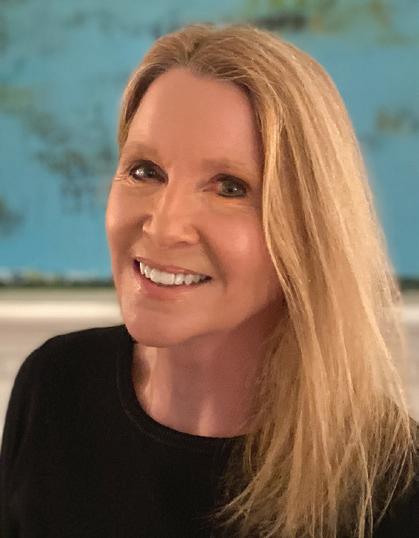
3 minute read
Change Agents
there has to be a recognition that all of Richmond needs to rise. It cannot be a section or a segment of the population that rises and the other doesn’t, because it will surely pull the city back to where it doesn’t want to be.
Racial injustice is alive and well in Richmond, and one evidence of that is the Richmond Free Press. It is a mirror of who supports the Free Press, who supports the readership of the Free Press, because if you don’t see advertising in the Free Press, it means that these businesses for the most part don’t want Black dollars to be spent with them. I know that’s a harsh thing to say, but it’s true. I remember having a white salesperson who was calling on car dealerships, and the car dealership manager said, “Why should I advertise with the Free Press? Black people are going to come anyway,” and I think that’s a point of view that still persists.
Any thoughts on Style on the occasion of its 40th?
The Free Press and Style forged a friendly competitive relationship, and I knew and know Lorna Wyckoff, who started Style, and I’ve known the editors through the years, the publishers. Ray has been on the cover of Style, I was as well, so I think that speaks to the friendly relationship.
or design. Style was more colorful and took more risks. And it also covered the arts as thoroughly as a little paper could. The calendar was very vital back then, and the restaurant guide. The ladies who lunch decided where to go based on Style’s restaurant guide. People made their weekend plans based on Style’s calendar. People really did rely on Style. It wasn’t all that long ago, even though it seems like it.
We tried to do pieces the Times-Dispatch wouldn’t touch. The first reporting in Richmond on AIDS that actually had sources on the record was Style. We tried to do things that meant a lot to the community, that were important stories, that the TD was too busy covering the mundane to think about. That was the focus in that late ‘80s, early ‘90s period … In the trajectory of Style’s development, I think I saw it through its terrible twos or maybe its difficult tween years. I like to think I improved the standards of reporting and storytelling, that maybe we were a more responsible news organization than when I got there. I would like to think that was what I contributed.
I was delighted that public broadcasting found a home for it. I think it will be a strong voice again, at least I hope it will. We need more voices in the market.
Toni McCracken
SENIOR ACCOUNT EXECUTIVE: 1984-2020
I turned 25 three days before I started there. Style got older with me. The median age kept getting older and older. I think people saw it as this young publication but that’s not what it was. It matured.
When I started there, Landmark had a publication called PortFolio for Hampton Roads that shut down after a year or two. The reason Style was successful was because of the arts coverage. That’s why the jewelry stores wanted to run ads with us; Schwarzschild was a very important client. They wanted to be where the arts were. The Modlin Center, the Symphony, the Opera, the Ballet: they were all big clients. We got more newsy, but the arts was always what kept us going.
The first couple of years, you’d say, “I’m from Style.” And they’d say “You’re from who?” The cold calling during that period of time was pretty brutal. I think there was just a few years of that, but maybe that’s things looking better when you look back.
1990s
Greg Weatherford
MANAGING EDITOR: 1994-1999

EXECTUVIE EDITOR: 2000-2001
I feel like they hired me as part of a transitional period in Style’s history. They hired me as their first assistant editor but it was really the first fulltime reporter. It was shifting from a small-scale operation into a whole different gear, where it was more of a mid-sized publication. When I got there the newsroom was about four to five people all told, when I left in 2001, we were up to about 15.
It was all driven by the amount of advertising they were pulling in. The books were getting bigger and bigger and they had to find ways to fill it. The strategy was basically to fill the spaces between the ads with something that would keep people coming back.
We went from a small underdog publication to probably the most influential print magazine in the region, in terms of the attention we would get and the people we would get attention from. People would return our calls right away by the time I left; that was definitely not the case when I started. I’d call up and say, “I’m from Style Weekly,” and










